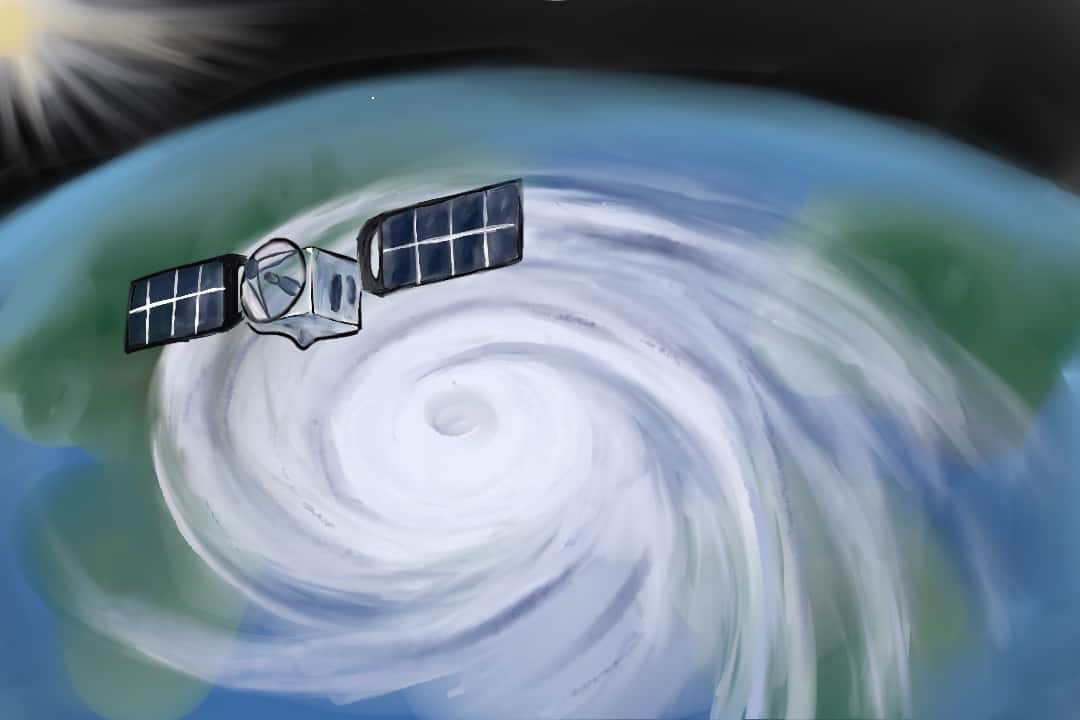As the climate crisis gets worse, extreme weather events are occurring with increased frequency and magnitude across the globe. To advance our understanding and prediction of these events, a consortium of researchers co-led by the University of Toronto has secured federal funding.
The team — consisting of 13 Canadian universities, federal government agencies, and aerospace industry partners — is collaborating with NASA on the High-altitude Aerosols, Water vapour and Clouds (HAWC) satellite system, a set of instruments designed to supply critical data on driving forces behind weather and climate patterns.
In a speech at the Spacebound Conference on October 18, 2022, François-Philippe Champagne, Canada’s minister of innovation, science and industry, announced over $200 million in funding for the HAWC mission. The HAWC system, with its various components scheduled to launch in 2028 and 2031, represents Canada’s contribution to the Atmospheric Observing System (AOS), an international mission led by NASA to improve our capacity to examine links between aerosols, clouds, and weather.
“Canada has always played a key role in international space programs, helping to find solutions to global challenges,” stated Champagne in his announcement. “Today, more than $200 million announcement builds on those successes with our participation in NASA’s AOS program. It also speaks to our commitment to harnessing science and research to address climate change, natural disasters, and other issues that are important to Canadians.”
The HAWC mission will contribute three instruments to the AOS: the Thin Ice Cloud and Far InfraRed Emissions (TICFIRE), the Spatial Heterodyne Observations of Water (SHOW), and the Aerosol Limb Imager (ALI). Two of these instruments will be mounted on a Canadian satellite, with the third on a NASA satellite. Together, HAWC instruments will provide comprehensive information on interactions between aerosols, water vapour, and clouds in our atmosphere. This knowledge will advance the ability of meteorologists and climate scientists to forecast and model events such as storms, floods, and droughts — a growing need worldwide.
U of T’s contribution to the project is co-led by Kaley Walker, a professor in the Department of Physics and co-lead of the broader HAWC mission, and Kimberly Strong, a professor and chair of the Department of Physics. Walker and Strong will head up data quality and validation for the mission and impart their expertise toward satellite mission development.
“The data we will capture through this satellite mission will help us better understand clouds, aerosols and their interactions — a major source of uncertainty in climate modelling — and strengthen our predictions,” said Walker in an interview with the Faculty of Arts and Science. “So many scientists and institutions have come together across the country to pool their expertise and resources in support of this important and exciting mission.”
Along with U of T, McGill University, the University of Saskatchewan, and l’Université du Québec à Montréal are the co-leading institutions on the HAWC mission. Other contributing universities are the University of New Brunswick, l’Université de Sherbrooke, the University of Waterloo, Wilfrid Laurier University, St. Francis Xavier University, Saint Mary’s University, the University of Victoria, Western University, and Dalhousie University.
Other Canadian collaborators include the Canadian Space Agency, Environment and Climate Change Canada, the National Research Council of Canada, and Natural Resources Canada. Internationally, NASA’s AOS mission comprises team members from Canada, the US, France, Germany, and Japan.
Canada’s HAWC system represents significant advances in atmospheric science and engineering. It serves as an impetus for the forging of partnerships coast to coast and the creation of training opportunities for the next generation of scientists and engineers. Taken together, the HAWC system and broader AOS mission will provide evidence to inform crucial policy decisions pertaining to climate change and deliver critical information to keep communities safe while moving forward.


